Home>Garden Essentials>How To Group Plants In Landscaping
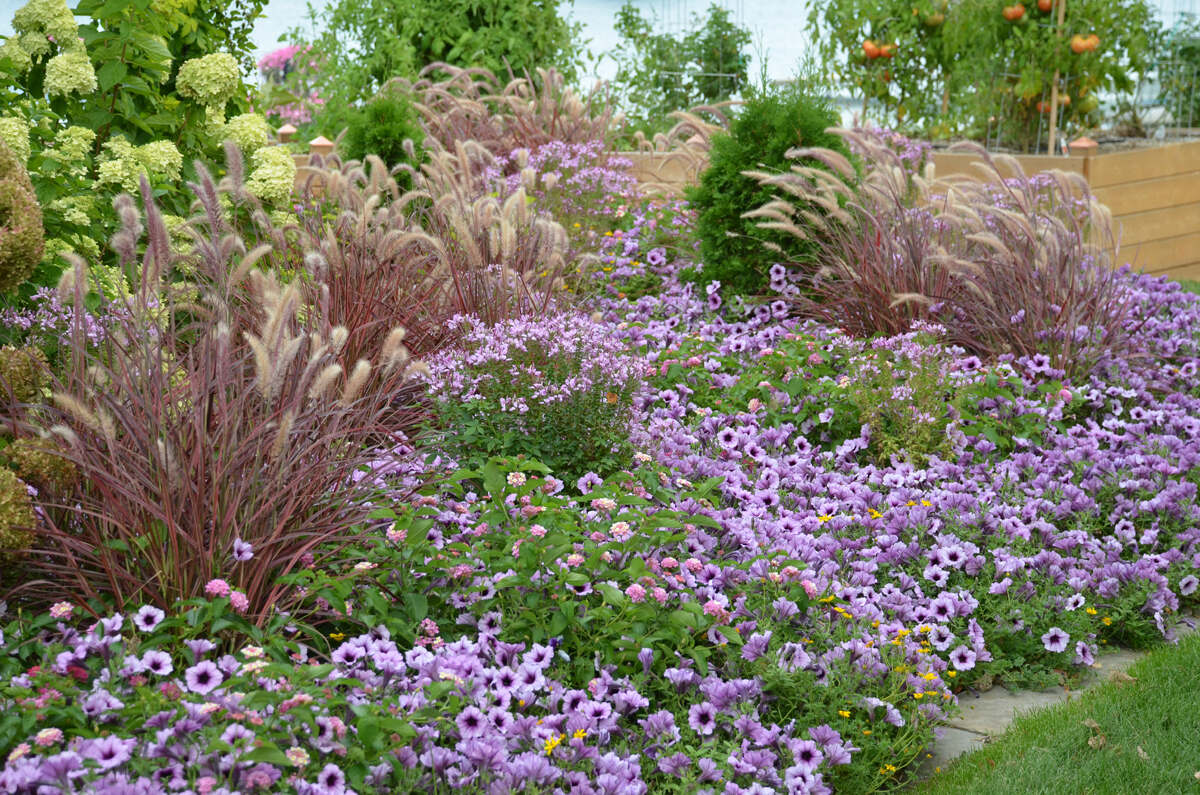

Garden Essentials
How To Group Plants In Landscaping
Modified: March 7, 2024
Discover how to group plants in your garden and create beautiful landscaping designs with our step-by-step guide. Enhance your outdoor space with strategic plant placement and achieve the garden of your dreams.
(Many of the links in this article redirect to a specific reviewed product. Your purchase of these products through affiliate links helps to generate commission for Storables.com, at no extra cost. Learn more)
Introduction
When it comes to creating a visually appealing and harmonious garden or landscape, grouping plants can make a significant difference. By strategically arranging plants based on their characteristics, such as color, height, texture, and flowering season, you can create stunning compositions that showcase the beauty of each individual plant while creating a cohesive and captivating overall picture.
In this article, we will explore the benefits of grouping plants in landscaping, factors to consider before planning plant groups, different techniques for grouping plants, and provide some valuable tips to help you create beautiful plant groups in your own garden.
Whether you are a seasoned gardener looking to revamp your landscape or a beginner wanting to explore the world of gardening, understanding the art of grouping plants will help you elevate your gardening endeavors to new heights.
Key Takeaways:
- Grouping plants in landscaping offers numerous benefits, including enhancing visual impact, creating balance, improving pollination, increasing biodiversity, optimizing growing conditions, reducing maintenance, and creating focal points.
- Factors to consider before planning plant groups include climate, available space and sunlight, soil type, maintenance requirements, growth habit, complementary characteristics, and seasonal interest.
Read more: Landscape Design: How To Group Plants
Benefits of Grouping Plants in Landscaping
Grouping plants in landscaping offers numerous benefits that go beyond just aesthetics. Here are some key advantages of incorporating plant grouping techniques in your garden:
- Enhances Visual Impact: By grouping plants based on their colors, textures, and heights, you can create visually striking compositions that catch the eye and add depth and interest to your landscape. It allows you to showcase the unique qualities of each plant while creating a cohesive and harmonious visual appeal.
- Creates Balance and Proportion: Grouping plants helps create a sense of balance and proportion in your garden. By combining plants of different heights and forms, you can create a visually pleasing arrangement that is well-balanced and proportionate to the overall landscape design.
- Improves Pollination: When you group plants with similar flowering seasons, you attract pollinators like bees and butterflies more effectively. This enhances pollination, resulting in better fruit set and healthier plants in your garden.
- Increases Biodiversity: Planting a variety of plants in groupings enhances biodiversity in your garden. Different plants attract different species of insects, birds, and other wildlife, creating a thriving ecosystem within your landscape.
- Optimizes Growing Conditions: Grouping plants with similar water and sunlight requirements allows for better control of irrigation and sunlight exposure. This ensures that each plant in the group receives the necessary conditions for optimal growth and health.
- Reduces Maintenance: Plant groups can help reduce the amount of maintenance required in your garden. By grouping plants with similar care requirements, you can streamline watering, fertilizing, and pruning tasks, saving both time and effort.
- Creates Focal Points: Groupings can be used to create focal points in your landscape. By strategically placing a well-curated group of plants, you can draw attention to specific areas, such as entrances, walkways, or garden features, adding visual interest and a sense of purpose to your design.
By taking advantage of these benefits, you can transform your garden into a stunning and sustainable landscape that not only pleases the eye but also supports the health and well-being of the plants and wildlife within it.
Factors to Consider before Planning Plant Groups
Before diving into the process of planning and creating plant groups, it’s important to consider a few factors that will affect the success and visual impact of your groupings. Here are some key factors to consider:
- Climate and Hardiness Zone: Understanding the climate and hardiness zone of your garden will help you choose suitable plants that can thrive in your specific environment. Different plants have different tolerance levels for temperature, humidity, and rainfall, so it’s important to select plants that are well-suited to your local climate.
- Available Space and Sunlight: Assess the available space in your garden and determine the amount of sunlight each area receives throughout the day. Some plants require full sun, while others prefer partial shade. By understanding the sunlight conditions, you can choose plants that will thrive in specific areas of your garden.
- Soil Type and Drainage: The type of soil in your garden and its drainage capabilities will impact the selection of plants. Some plants prefer sandy or well-draining soil, while others thrive in moist or clay soils. Conduct a soil test to determine the pH level and nutrient content of your soil, and select plants that are suitable for those conditions.
- Maintenance Requirements: Consider your available time and resources for garden maintenance. Some plants require regular pruning, deadheading, or fertilizing, while others are more low-maintenance. Choose plants that align with your desired level of involvement in gardening.
- Growth Habit and Size: Take into account the growth habit and size of plants when planning your groupings. Some plants may spread or grow tall, potentially overshadowing or overcrowding neighboring plants. Ensure that you choose plants with compatible growth habits to maintain the integrity of your groupings.
- Complementary and Contrasting Characteristics: Consider the complementary and contrasting characteristics of plants when creating groups. Choose plants with different colors, textures, heights, and bloom times to create interest and harmony within your groupings.
- Seasonal Interest: Plan for year-round interest in your garden by selecting plants that offer visual appeal in different seasons. Incorporate evergreen plants, plants with colorful foliage, and plants that bloom at different times to ensure a vibrant and dynamic landscape throughout the year.
By considering these factors before planning your plant groups, you can ensure that your selections are well-suited to your garden’s conditions and create beautiful and thriving plant compositions that enhance your landscape.
Different Techniques for Grouping Plants in Landscaping
There are several effective techniques you can use to group plants in your landscape design. Each technique offers a different way to create visual interest and cohesion within your garden. Here are some popular techniques for grouping plants:
- By Plant Type: This technique involves grouping plants based on their botanical families or classifications. For example, you can create a group of succulents, a group of ornamental grasses, or a group of flowering shrubs. This technique allows you to showcase the unique characteristics of each plant type and create a cohesive and organized look.
- By Color: Creating plant groups based on color is an easy and effective technique to bring visual impact to your landscape. You can create monochromatic groups using plants with flowers, foliage, or both in the same color family. Alternatively, you can create contrasting color groups by combining plants with complementary or contrasting colors, such as yellow and purple or red and green. This technique adds vibrancy and visual interest to your garden.
- By Height: Grouping plants by height creates a sense of structure and hierarchy in your garden. You can create layers by placing taller plants at the back and shorter plants at the front. This technique adds depth and dimension to your landscape, visually expanding the space.
- By Texture: Grouping plants based on their texture adds visual interest and variety to your garden. You can create groups with plants that have fine, delicate foliage, or group plants with bold, coarse textures together. Combining different textures creates a visually appealing contrast and adds depth to your landscape design.
- By Flowering Season: This technique involves grouping plants based on their flowering seasons. You can create groups that showcase plants with early spring blooms, summer flowering plants, or late-season bloomers. This technique ensures there is always something in bloom throughout the year, providing continuous visual interest in your garden.
- By Water Requirements: Grouping plants based on their water needs allows for efficient watering practices and ensures that each plant in the group receives the appropriate amount of water. Create groups with plants that have similar water requirements, such as drought-tolerant plants or water-loving plants. This technique helps conserve water and promotes the health and vitality of your plants.
It’s important to note that these techniques are not mutually exclusive, and you can combine them to create unique and personalized plant groupings that suit your preferences and design goals. Experiment with different combinations and arrangements to find the perfect grouping style that enhances the overall beauty of your landscape.
By Plant Type
Grouping plants by their plant type is a popular technique used in landscaping to create cohesive and organized compositions. This technique involves grouping plants based on their botanical families or classifications. By grouping plants with similar characteristics together, you can highlight their unique qualities and create visually appealing displays. Here are some tips for implementing this technique:
- Select a Theme: Choose a specific plant type or category to create a theme for your grouping. For example, you can create a group of succulents, a group of ornamental grasses, or a group of flowering shrubs. Selecting a theme will help you narrow down your plant choices and create a unified look.
- Vary Plant Heights: Consider the height of the plants within your chosen plant type and create a varied arrangement by placing taller plants towards the back and shorter plants towards the front. This will add depth and visual interest to your grouping.
- Consider Foliage and Texture: Pay attention to the foliage and texture of the plants within the group. Choose plants with different leaf shapes, sizes, and textures to create contrast and visual appeal.
- Use Color Variation: Even within a single plant type, there can be variations in color. Choose plants with different colored leaves or flowers to add dimension and interest to the grouping.
- Consider Seasonal Interest: Select plants within the same plant type that offer seasonal interest throughout the year. This can include plants that have colorful foliage or those that bloom at different times during the year. Ensuring year-round interest will keep your plant grouping visually appealing in every season.
- Create Repetition: To create a sense of unity and cohesiveness, consider using repetition of certain plants within the group. This repetition can help tie the grouping together and create a visually pleasing pattern.
By grouping plants based on their plant type, you can showcase the unique characteristics and features of each variety. This technique is particularly useful when you want to highlight specific plants or create a specialized display in your garden. Whether you want to create a succulent garden, a herb collection, or a group of flowering perennials, organizing the plants by their type will create a visually appealing and cohesive composition in your landscape.
Read more: How To Choose Plants For Landscaping
By Color
Grouping plants by color is a powerful technique used in landscaping to create visually striking and harmonious displays. By organizing plants based on their color, you can create vibrant compositions that catch the eye and add a sense of unity to your garden. Here are some tips for implementing this technique:
- Choose a Color Scheme: Decide on a specific color scheme or combination that you want to focus on. This can be monochromatic, using shades and tints of a single color, or complementary, using contrasting colors to create visual impact. Selecting a color scheme will help guide your plant choices and ensure a cohesive look.
- Vary the Shades and Tones: Within your chosen color scheme, consider using plants with different shades and tones of the selected color. This will add depth and visual interest to the grouping.
- Consider Foliage Color: Don’t limit yourself to just flowers when grouping plants by color. Take into account the foliage color of the plants as well. Incorporating plants with colorful foliage can provide visual interest even when they are not in bloom.
- Think about Bloom Time: Select plants with different bloom times within your chosen color scheme. This will ensure that your grouping has color and visual interest throughout the growing season. Incorporate early bloomers, mid-season bloomers, and late-season bloomers to maintain a continuous display.
- Create Contrast: For a more visually dynamic grouping, consider using contrasting colors. Pairing colors like yellow and purple, red and green, or orange and blue can create a striking and eye-catching effect.
- Consider Color Proportions: Think about the proportions of each color within the grouping. Aim for a balanced distribution of colors to create a pleasing visual composition. Avoid overcrowding one color and leaving others underrepresented.
- Use Color as a Focal Point: When planning your landscape design, consider using color groupings as focal points. Place them strategically in areas where you want to draw the eye or create a visual impact, such as near entrances, along pathways, or in the center of a garden bed.
Grouping plants by color allows you to create visually stunning displays that can evoke certain moods or themes in your garden. Whether you want to create a calming and serene all-white garden, a vibrant and energetic mix of bold colors, or a soft and elegant pastel palette, organizing plants by color will enhance the overall visual appeal of your landscape.
When grouping plants in landscaping, consider their water and sunlight needs to ensure they thrive together. Also, vary heights and textures for visual interest.
By Height
Grouping plants by height is an effective technique used in landscaping to create depth, visual interest, and a sense of organization in your garden. By arranging plants based on their height, you can create layers and varying heights that add dimension to your landscape design. Here are some tips for implementing this technique:
- Plan for Different Levels: Consider the ultimate height of each plant and plan their placement accordingly. Place taller plants towards the back or center of the grouping and gradually decrease the height as you move towards the front or edges.
- Create Visual Flow: Arrange the plants in a way that creates a gradual transition of heights. This will create a visually pleasing flow within the grouping and avoid abrupt changes in height that might appear disorganized.
- Consider Plant Growth Rate: Take into account the growth rate of each plant when organizing by height. This will help you plan for future growth and prevent taller plants from overshadowing or crowding out shorter plants over time.
- Use Plant Supports: Incorporate plant supports or trellises for climbing plants or plants that have a tendency to lean or sprawl. This ensures that they stay upright and maintain their desired height within the grouping.
- Add Visual Interest: Mix plants with different foliage colors, textures, and shapes to add visual interest to the height grouping. This will create a dynamic and visually appealing arrangement.
- Consider Sight Lines: Think about the position of the grouping in relation to the sight lines in your garden. Place taller plants towards the back if you want to create a focal point from a specific viewpoint, such as a seating area or a garden entrance.
- Balance the Heights: Aim for a balanced distribution of heights within the grouping. Avoid having one dominant height that overpowers the rest. Instead, create a harmonious and well-proportioned arrangement that adds depth and visual interest.
Grouping plants by height allows you to create a visually appealing composition that takes advantage of the inherent beauty and architecture of plants at different heights. Whether you want to create a layered border along a walkway or a tiered planting in a raised bed, organizing plants by height adds depth and dimension to your landscape design.
By Texture
Grouping plants by texture is an effective technique used in landscaping to create visual interest and contrast in your garden. By arranging plants based on their foliage texture, you can add depth and diversity to your landscape design. Here are some tips for implementing this technique:
- Consider Leaf Shape and Size: Look for plants with different leaf shapes and sizes to create texture variation. Combine plants with broad leaves, thin leaves, heart-shaped leaves, and finely divided leaves to add visual interest.
- Contrast Fine and Coarse Textures: Pair plants with fine, delicate foliage alongside those with bold, coarse textures. This contrast creates a visually stimulating grouping that adds depth and dimension to your garden.
- Consider Leaf Surface: Take into account the texture of the leaf surface. Some plants have smooth, shiny leaves, while others have rough, textured foliage. Combine plants with different leaf surfaces to create a tactile experience in your garden.
- Use Ornamental Grasses: Ornamental grasses are known for their unique texture and movement in the breeze. Incorporate grasses with feathery or spiky foliage to add a graceful and flowing texture to your plant grouping.
- Include Plants with Unique Textural Qualities: Look for plants with interesting textural qualities, such as jagged or serrated leaves, fuzzy or hairy foliage, or plants with peeling bark. These unique textures add character and intrigue to your grouping.
- Consider Bloom Textures: Don’t limit texture to just foliage. Include plants with interesting textures in their flowers as well. Look for plants with fluffy, spiky, or intricate flower structures to create texture diversity within the grouping.
- Balance Textures: Aim for a balanced distribution of textures within the grouping. Avoid overcrowding one type of texture and leaving others underrepresented. Consider the overall visual and tactile experience you want to create in your garden.
Grouping plants by texture allows you to create a visually captivating composition that showcases the unique characteristics and qualities of each plant. Whether you want to create a lush and soft grouping with fine textures or a bold and dramatic arrangement with coarse textures, organizing plants by texture adds depth and visual interest to your landscape.
By Flowering Season
Grouping plants by flowering season is a strategic technique used in landscaping to ensure a continuous display of blooms throughout the year. By arranging plants based on their flowering season, you can create a dynamic and ever-changing landscape that offers visual interest and color throughout each season. Here are some tips for implementing this technique:
- Choose Plants with Varying Bloom Times: Select plants that have different flowering seasons, including early spring bloomers, summer perennials, and late-season flowers. This will ensure a steady progression of blooms in your garden.
- Create a Seasonal Sequence: Arrange the plants in a way that creates a natural sequence of blooms. Plan for a gradual transition from one season to the next, ensuring that there are always plants in bloom throughout the year.
- Consider Foliage Interest: Choose plants with interesting foliage or unique leaf colors, even when they are not in bloom. This will provide visual appeal and maintain interest in the garden during non-flowering periods.
- Add Bulbs and Annuals: Incorporate bulbs and annuals into your planting scheme to fill in any gaps between perennial blooms. These plants offer quick bursts of color and can bridge the transition between different flowering seasons.
- Create Color Combinations: Experiment with color combinations within each seasonal group to enhance the visual impact of the blooms. Select plants that complement or contrast each other in terms of color to create stunning arrangements.
- Consider Different Flower Forms: Incorporate plants with different flower forms, such as spikes, clusters, or daisy-like blooms, to add variety and interest to the grouping. This will create a visually diverse and captivating display.
- Take into Account Plant Care: Consider the care requirements of each plant, including watering, fertilization, and pruning, when organizing by flowering season. Ensure that you can provide the necessary care during each specific season to maintain healthy and blooming plants.
Grouping plants by flowering season allows you to create a garden that provides vibrant blooms year-round. Whether you want to showcase the freshness of spring, the abundance of summer, or the richness of autumn colors, organizing plants by their flowering season ensures that your garden remains a colorful and visually enticing space throughout the year.
Read more: Where To Buy Landscaping Plants
By Water Requirements
Grouping plants by water requirements is a practical and sustainable technique used in landscaping to ensure efficient watering practices and promote the health and vitality of your plants. By arranging plants based on their water needs, you can create plant groups that receive the appropriate amount of water, reducing water waste and optimizing growing conditions. Here are some tips for implementing this technique:
- Understand Water Preferences: Research and understand the water preferences of each plant species you plan to include in your grouping. Some plants thrive in moist or wet soil, while others prefer dry or well-drained conditions.
- Create Water Zones: Divide your garden into different water zones based on the water requirements of the plants. Group plants with high water needs together, and group plants with low water needs separately.
- Consider Soil Drainage: Take into account the soil drainage in your garden when creating water zones. Place plants with high water needs in areas with better water retention, and plants with low water needs in areas with faster drainage.
- Use Drip Irrigation or Soaker Hoses: Install a drip irrigation system or soaker hoses within each water zone to deliver water directly to the root zone of the plants. This ensures that each plant in the grouping receives the appropriate amount of water without wastage.
- Group Drought-Tolerant Plants: Create a separate group for plants that are drought-tolerant and require less frequent watering. This allows you to use water more sparingly and efficiently, especially during dry periods.
- Consider Watering Schedule: Plan your watering schedule based on the water requirements of each group. This ensures that you are providing optimal moisture levels for each plant, promoting healthy growth and reducing the risk of over or underwatering.
- Monitor Soil Moisture: Regularly check the moisture level of the soil within each water zone to determine the watering needs of the plants. Adjust the watering schedule as necessary to maintain the proper moisture balance for each group.
Grouping plants by water requirements is an effective way to conserve water, optimize watering practices, and ensure the long-term health and vigor of your plants. By organizing plants based on their water needs, you can create a sustainable and eco-friendly garden that thrives while minimizing water waste.
Tips for Creating Beautiful Plant Groups
Creating beautiful plant groups in your garden involves careful consideration and thoughtful planning. Here are some tips to help you create stunning and visually appealing plant groupings:
- Start with a Focus: Determine the focal point or main design element you want to highlight in your garden. This can be a specific plant, a garden feature, or an architectural element. Let this focal point guide your plant selection and grouping around it.
- Consider Proportions: Plan the plant groupings based on the size and scale of your garden. Larger gardens can accommodate more extensive groupings, while smaller spaces may require more compact groupings. Ensure that the proportions of the plant groups align with the overall design of your landscape.
- Choose a Variety of Plants: Incorporate a diverse selection of plants within each grouping. Include plants with different colors, textures, heights, and forms to create interest and balance. This variety will add depth and visual appeal to your plant groupings.
- Consider Seasonal Interest: Aim for year-round interest by selecting plants that offer visual appeal in different seasons. Incorporate evergreen plants, plants with colorful foliage, and those that bloom at different times to ensure that your plant groups maintain their beauty throughout the year.
- Pay Attention to Plant Compatibility: Consider the compatibility of plants within each grouping. Ensure that they have similar cultural requirements, such as sun exposure, soil conditions, and water needs. This will help you provide the optimal growing conditions for each plant within the group.
- Create Contrast and Harmonious Combinations: Strive for a balance of contrast and harmony within your plant groupings. Use contrasting colors, textures, and shapes to create visual interest, but ensure that they still harmonize and complement each other. This balanced combination will create a visually pleasing arrangement.
- Plan for Growth: Consider the future growth of the plants within each grouping. Research and understand the expected size and spread of each plant to avoid overcrowding or overshadowing in the future. Allow enough space for the plants to grow and thrive together harmoniously.
- Pay Attention to Plant Maintenance: Be mindful of the maintenance requirements of each plant within the grouping. Select plants that align with your desired level of involvement in gardening and ensure that you can provide the necessary care, such as watering, pruning, and fertilizing, to maintain their health and appearance.
- Experiment and Adapt: Don’t be afraid to experiment with different plant combinations and arrangements. Gardening is a creative process, and sometimes the beauty of plant groupings reveals itself through trial and error. Adapt and make adjustments as needed to achieve the desired visual impact.
By following these tips, you can create beautiful and captivating plant groupings in your garden. Remember to combine your knowledge of plant characteristics with your own personal style and creative vision to design unique and stunning landscapes that reflect your personality and love for gardening.
Conclusion
Grouping plants in landscaping is a powerful technique that allows you to create visually appealing and harmonious gardens. By strategically arranging plants based on their characteristics such as color, height, texture, flowering season, water requirements, and plant type, you can create stunning compositions that showcase the beauty of each individual plant while creating a cohesive and captivating overall picture.
Throughout this article, we explored the numerous benefits of grouping plants, including enhancing visual impact, creating balance and proportion, improving pollination, increasing biodiversity, optimizing growing conditions, reducing maintenance, and creating focal points in your garden.
We also discussed important factors to consider before planning plant groups, such as climate and hardiness zone, available space and sunlight, soil type and drainage, maintenance requirements, growth habit and size, complementary and contrasting characteristics, and seasonal interest.
Furthermore, we delved into different techniques for grouping plants, including grouping by plant type, color, height, texture, flowering season, and water requirements. Each technique offers a unique way to create visual interest, depth, and cohesion in your garden.
To create beautiful plant groups, we shared valuable tips such as starting with a focus, considering proportions, choosing a variety of plants, paying attention to seasonal interest, ensuring plant compatibility, creating contrast and harmony, planning for growth, and adapting as needed.
In conclusion, grouping plants in landscaping allows you to unleash your creativity and transform your garden into a stunning masterpiece. By combining knowledge of plant characteristics, design principles, and your own personal style, you can create plant groupings that not only enhance the beauty of your landscape but also provide a thriving ecosystem for plants and wildlife to thrive.
So, embrace the art of grouping plants, experiment with different techniques, and let your garden become a captivating reflection of your passion for gardening.
Frequently Asked Questions about How To Group Plants In Landscaping
Was this page helpful?
At Storables.com, we guarantee accurate and reliable information. Our content, validated by Expert Board Contributors, is crafted following stringent Editorial Policies. We're committed to providing you with well-researched, expert-backed insights for all your informational needs.
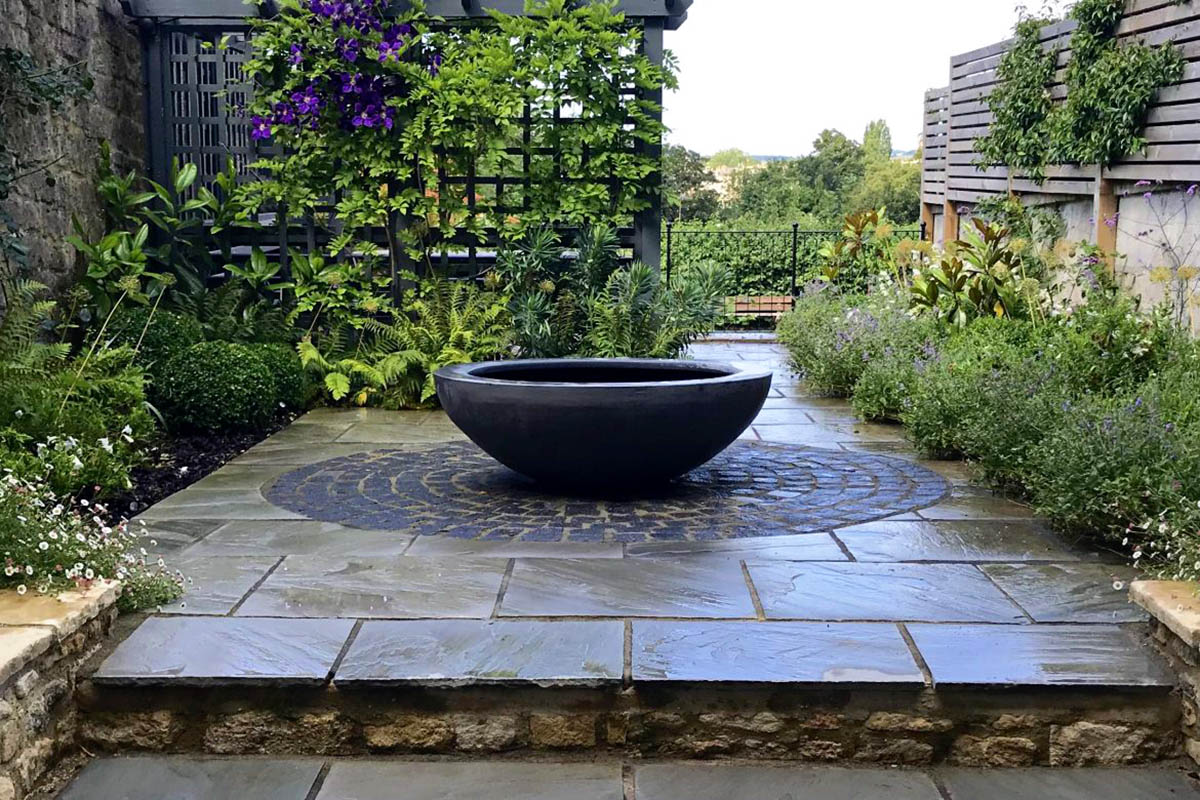
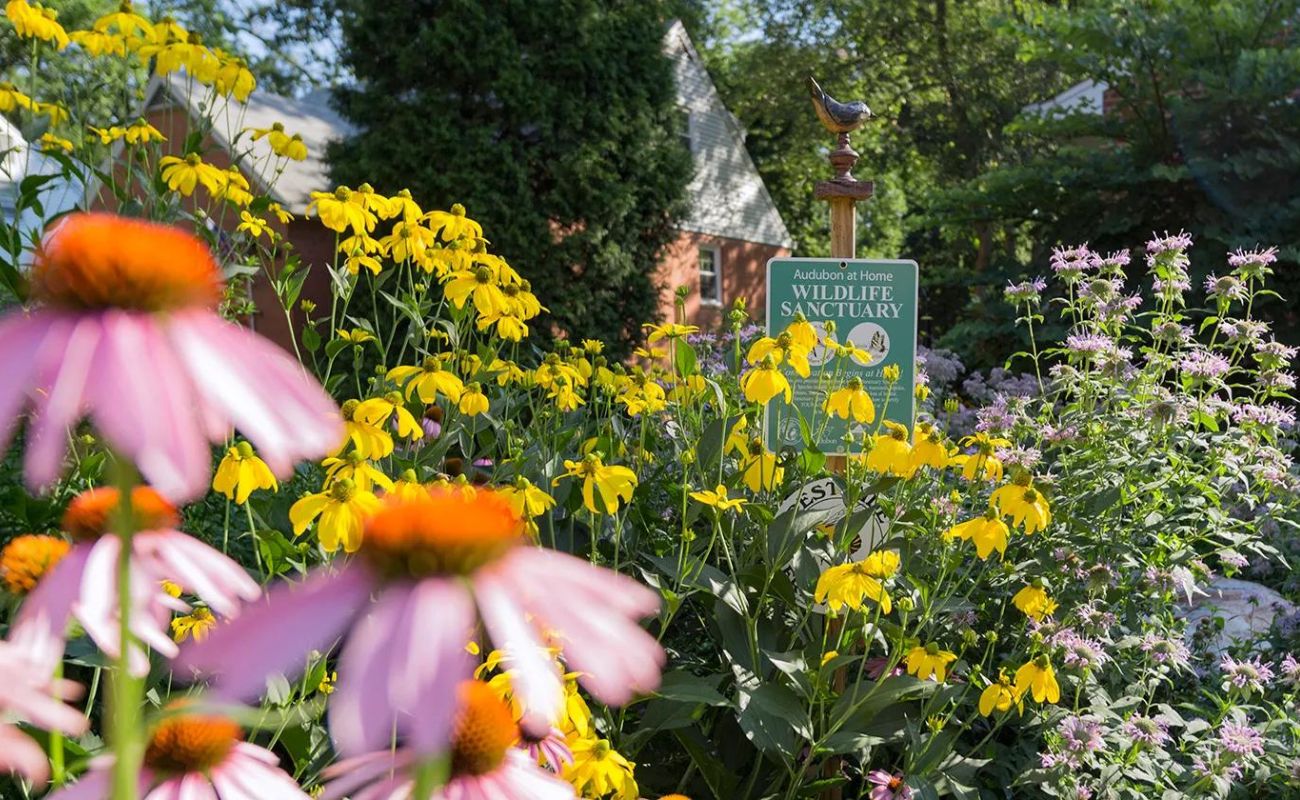
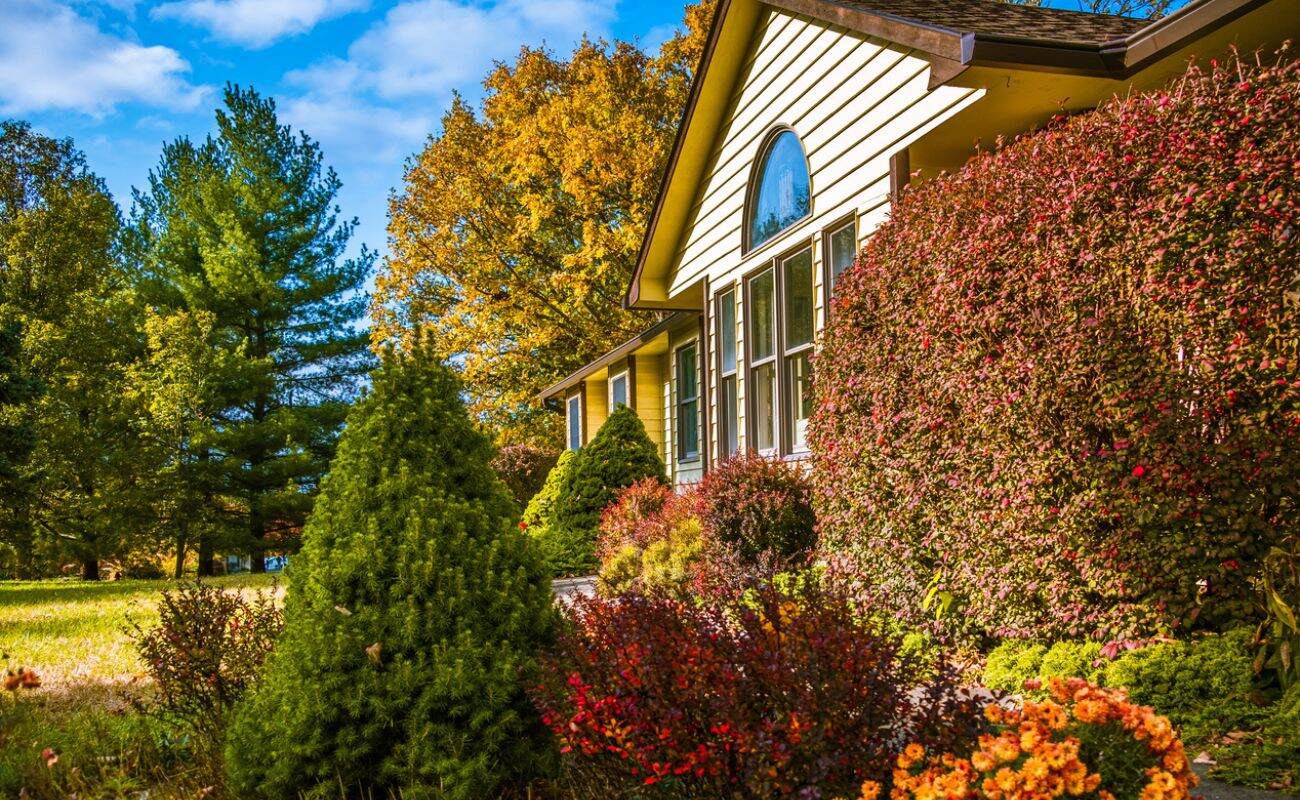
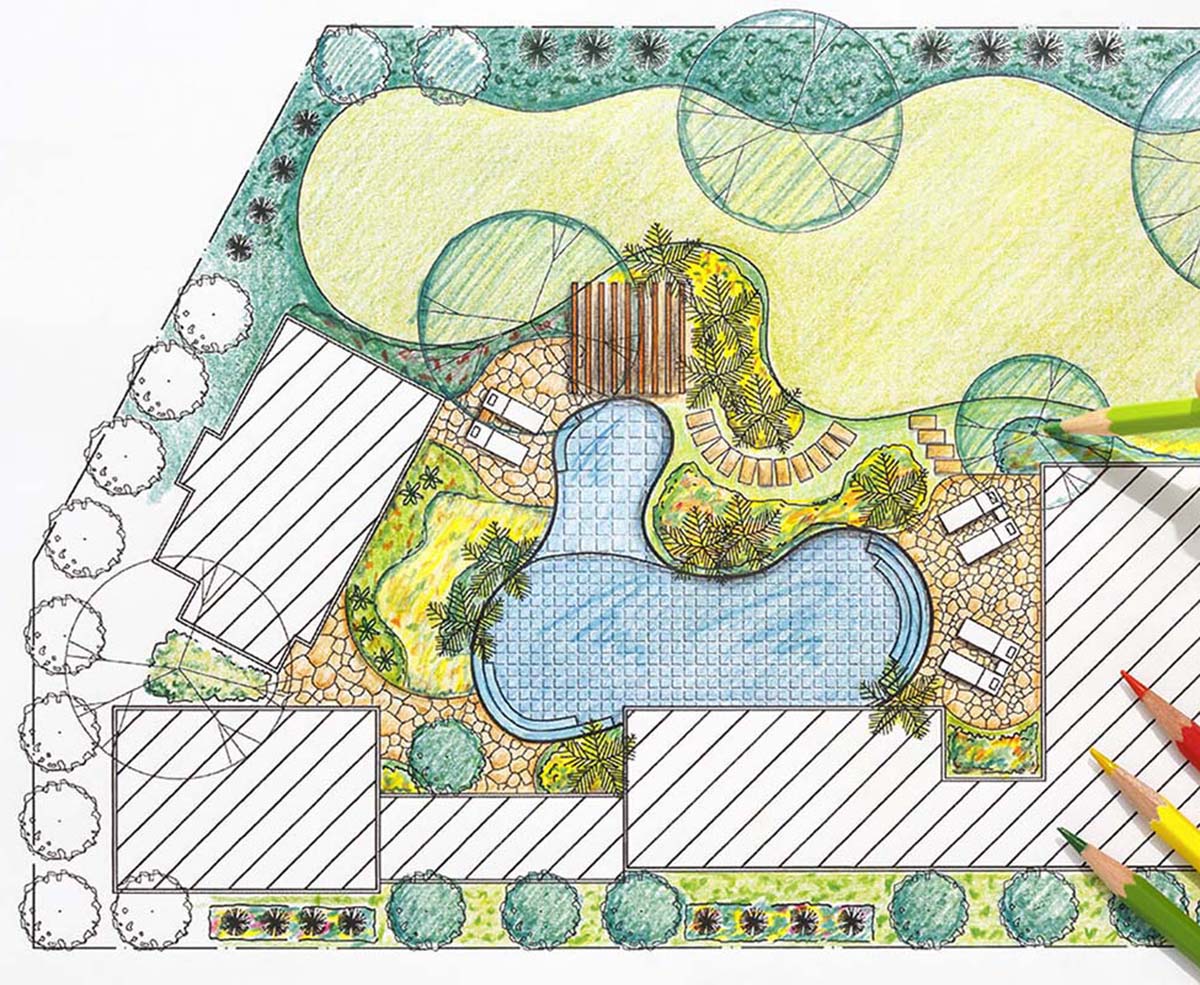
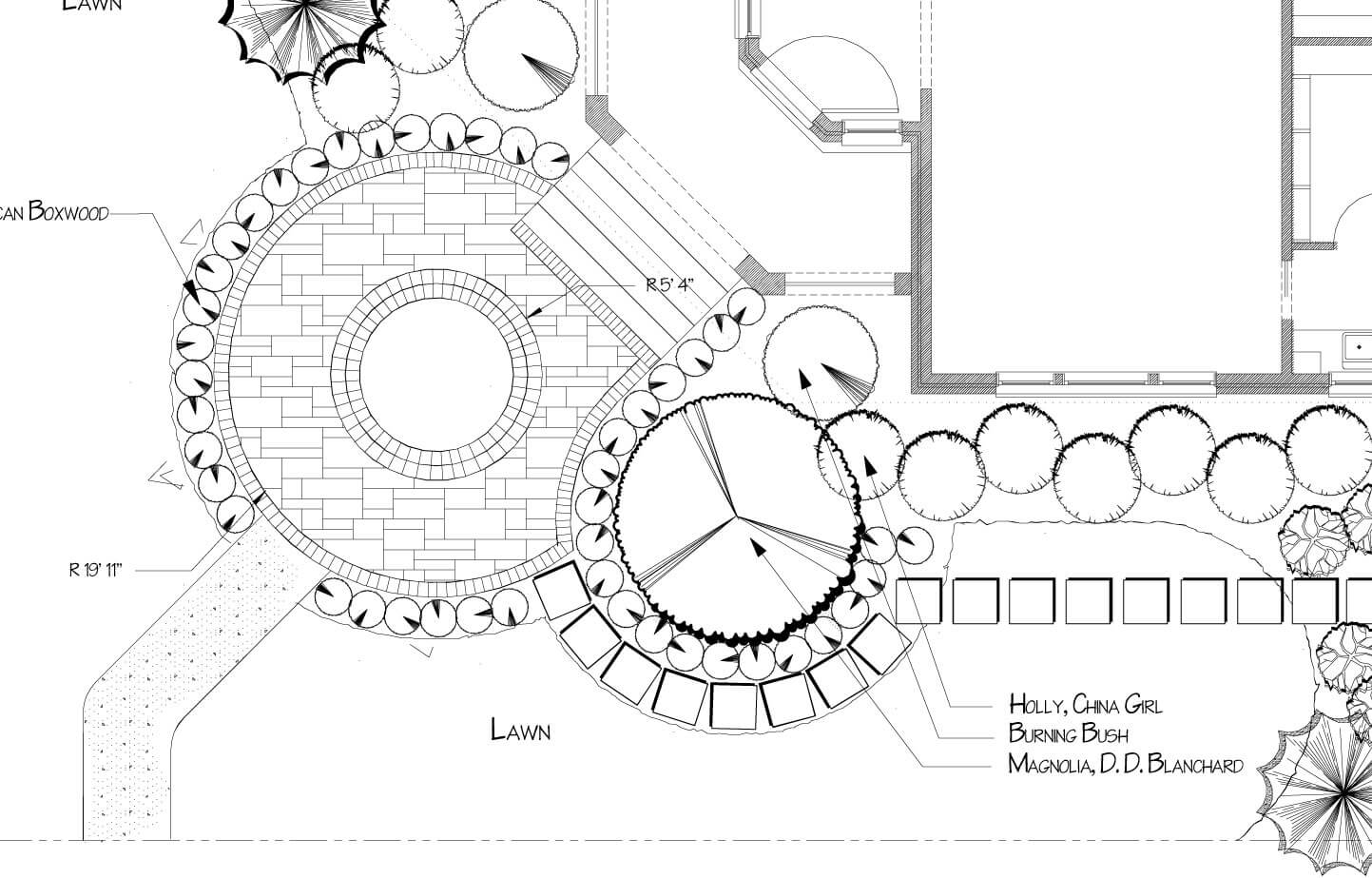






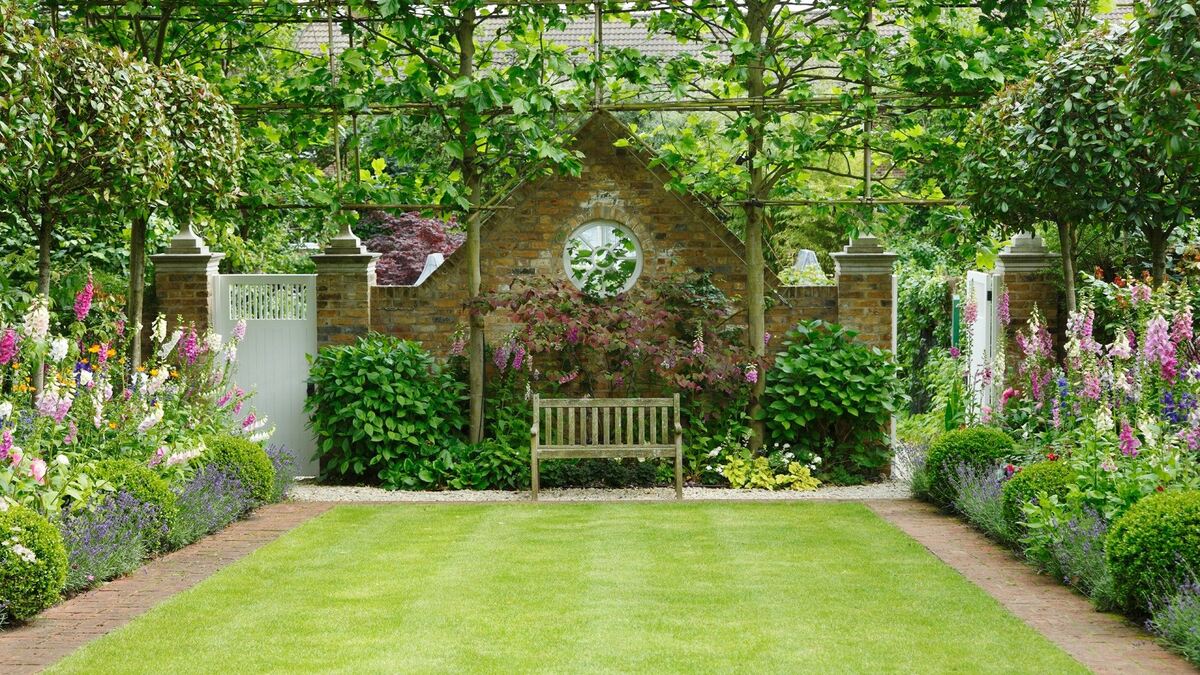


0 thoughts on “How To Group Plants In Landscaping”